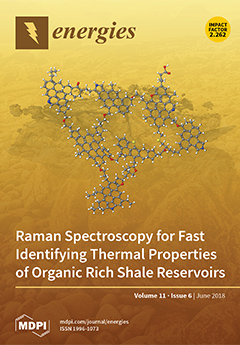The reduction of high acid value (AV) of inedible jatropha oil (JO) by esterification with isopropanol (IPA), which is a common alcohol solvent waste in Taiwan’s high-tech industry, was studied. The decrease of AV is beneficial for the subsequent transesterification to produce JO biodiesel (i.e., biodiesel of fatty acid isopropyl ester (FAIE)). Acid catalyst (H
2SO
4) and a novel mixing/emulsion technique using ultrasound irradiation (UI) were applied to promote and facilitate the esterification process. The results showed that increased IPA/oil molar ratio (M
IOE) can significantly reduce the AV, kinematic viscosity (KV), density (ρ
LO), and water content (M
W) of esterified JO, while also providing the benefit of enhancing the yield (Y
F) of biodiesel of FAIE. For example, with M
IOE = 5 at esterification temperature (T
E) = 394.2 K (393.8–394.7 K), a reduction of AV of 99.25% with Y
F of 67.15% can be achieved. Free fatty acid (FFA) was reduced from 18.06 wt.% to 0.14 wt.%, indicating 17.92 wt.% out of 18.06 wt.% of FFA was esterified to FAIE. As a result, among the Y
F of 67.15%, 49.23% (= 67.15 wt.% deducting 17.92 wt.%) was contributed by the transesterification of triglycerides. By esterification of high FFA-containing raw JO with acid catalyst, one can not only avoid saponification, but also reduce the loading of the subsequent alkali-catalyzed transesterification. Moreover, increasing T
E from 394.2 to 454.4 K further reduced AV (from 0.27 to 0.084 mg KOH/g) and M
W (from 0.27 to 0.043 wt.%), but, on the other hand, it increased KV (from 14.62 to 25.2 mm
2/s) and ρ
LO (from 901.6 to 913.3 kg/m
3), while it decreased Y
F (from 67.15 to 25.84%). In sum, IPA was successfully used as a replacement for methanol in the esterification of JO while UI provided mixing/emulsion along with heating resulting from cavitation for the system.
Full article





